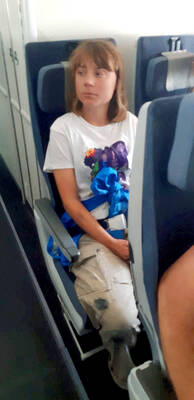With increasingly few of their families left alive and acidic soil eating into their buried remains, time is running out to find the last US military personnel listed as missing in action from the Vietnam War.
However, for the head of a relatives’ group, giving up is not an option.
“We need to act now,” said Ann Mills-Griffiths, executive director of the National League of POW/MIA Families, whose brother has been missing since September 1966 when his navy aircraft disappeared over North Vietnam.
Almost four decades after the end of US combat involvement in Vietnam, few parents of about 1,700 missing soldiers and airmen are still alive and siblings are often in their 60s.
Witnesses are also ageing, their fading physical and mental abilities limiting their ability to assist in investigations.
Mills-Griffiths, 69, was in Hanoi for talks that ended at the weekend with Vietnamese officials about a “renewed effort” to open up archival records which could provide vital clues as to what happened in some of the cases.
She was optimistic that the records would be made available, with “very good commitment” from the Vietnamese during the talks.
“But we’re running out of time,” warned Mills-Griffiths, who has made about 30 trips to Vietnam as head of the families’ group.
The US and Vietnam have cooperated on investigations into missing US servicemen since 1985 — “the bridge,” she says, which led to the normalization of diplomatic relations 10 years later.
While Vietnamese authorities have been very helpful on individual cases, Mills-Griffiths said the US would like broader access to archives related to areas along the Laotian border “where we have many, many losses.”
“We know their record-keeping was almost of a scientific nature,” said Vietnam veteran Richard Childress, who is a senior policy adviser to Mills-Griffiths.
Investigations are handled by the Hawaii-based Joint POW/MIA Accounting Command (JPAC), which conducts research, witness interviews and field analysis at sites in Vietnam where remains of missing servicemen are suspected to be.
The Americans work alongside a Vietnamese liaison team and when they have enough evidence, separate JPAC crews are called in to dig and try to find the remains — which is where time is also against them.
”There’s a lot of acidic soil in this area. In fact, it has eaten away at the remains and there are smaller and smaller pieces to recover,” Mills-Griffiths said.
At the same time, scientific advances mean that, particularly with dental remains, there is a very high chance of individual identification, she said.
Hanoi says about 300,000 of its own soldiers are still listed as missing from the war.
Of the US MIAs (individuals “missing in action”), about 1,300 cases are in Vietnam. Most of the rest are is areas of Cambodia and Laos that were under Vietnamese control, Mills-Griffiths said.
Two years ago, Hanoi proposed stepping up the pace and scope of searches, but budget delays in the US Congress have limited the US ability to respond, Mills-Griffiths said.
If eventually approved, next year’s fiscal budget includes “a significant increase” for JPAC that would allow it to deploy more teams, she said.
This year JPAC plans four month-long missions for investigation and excavation, with one under way now.
The remains of some servicemen will never be found, but Mills-Griffiths said her league seeks the “fullest possible” accounting, so family members know all efforts have been made to clarify the fate of loved ones.
Mills-Griffiths estimates the US has spent “countless millions” of dollars on the effort.
“I’m sure some people might think that it’s like an exercise in looking at the past, but if I become captive or missing I want to know somebody is there to return me to my family and to the country that I served,” she said.
Mills-Griffiths said that because of her position, she has never discussed the case of her brother, Lieutenant Commander James Mills, with the Vietnamese.
“What has kept me involved all this time is not the fact that I have a brother who’s missing. What’s kept me involved is the principles of it and knowing it’s the right thing to do, for a nation to do,” she said

Swedish campaigner Greta Thunberg was deported from Israel yesterday, the Israeli Ministry of Foreign Affairs said, the day after the Israeli navy prevented her and a group of fellow pro-Palestinian activists from sailing to Gaza. Thunberg, 22, was put on a flight to France, the ministry said, adding that she would travel on to Sweden from there. Three other people who had been aboard the charity vessel also agreed to immediate repatriation. Eight other crew members are contesting their deportation order, Israeli rights group Adalah, which advised them, said in a statement. They are being held at a detention center ahead of a

A Chinese scientist was arrested while arriving in the US at Detroit airport, the second case in days involving the alleged smuggling of biological material, authorities said on Monday. The scientist is accused of shipping biological material months ago to staff at a laboratory at the University of Michigan. The FBI, in a court filing, described it as material related to certain worms and requires a government permit. “The guidelines for importing biological materials into the US for research purposes are stringent, but clear, and actions like this undermine the legitimate work of other visiting scholars,” said John Nowak, who leads field

Former Nicaraguan president Violeta Chamorro, who brought peace to Nicaragua after years of war and was the first woman elected president in the Americas, died on Saturday at the age of 95, her family said. Chamorro, who ruled the poor Central American country from 1990 to 1997, “died in peace, surrounded by the affection and love of her children,” said a statement issued by her four children. As president, Chamorro ended a civil war that had raged for much of the 1980s as US-backed rebels known as the “Contras” fought the leftist Sandinista government. That conflict made Nicaragua one of

NUCLEAR WARNING: Elites are carelessly fomenting fear and tensions between nuclear powers, perhaps because they have access to shelters, Tulsi Gabbard said After a trip to Hiroshima, US Director of National Intelligence Tulsi Gabbard on Tuesday warned that “warmongers” were pushing the world to the brink of nuclear war. Gabbard did not specify her concerns. Gabbard posted on social media a video of grisly footage from the world’s first nuclear attack and of her staring reflectively at the Hiroshima Peace Memorial. On Aug. 6, 1945, the US obliterated Hiroshima, killing 140,000 people in the explosion and by the end of the year from the uranium bomb’s effects. Three days later, a US plane dropped a plutonium bomb on Nagasaki, leaving abut 74,000 people dead by the